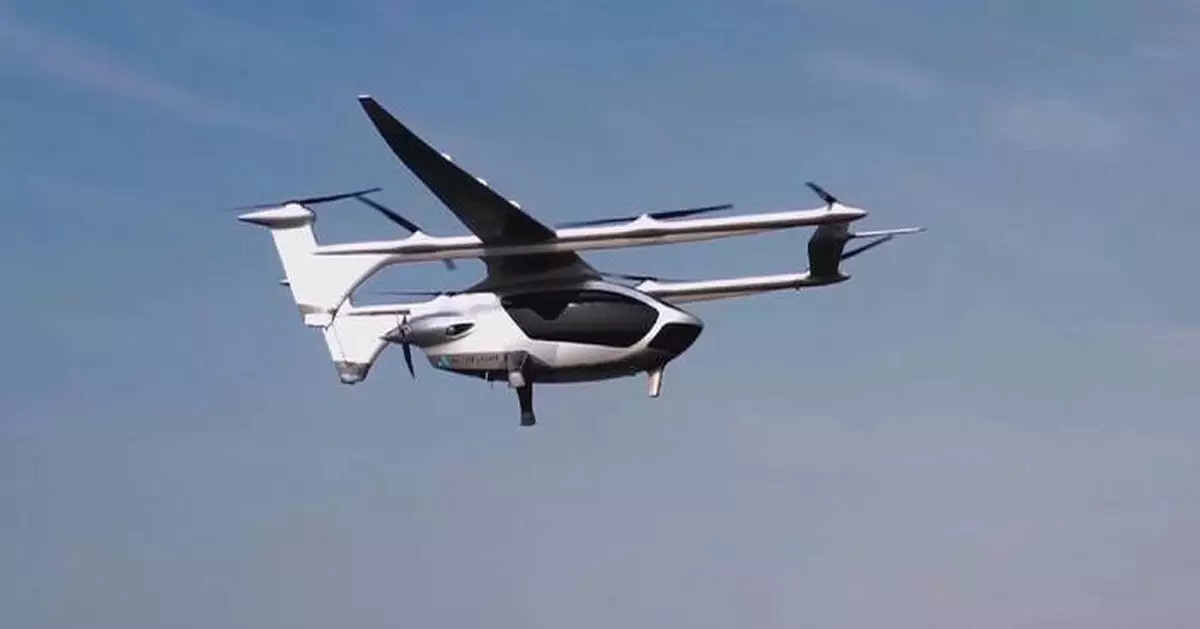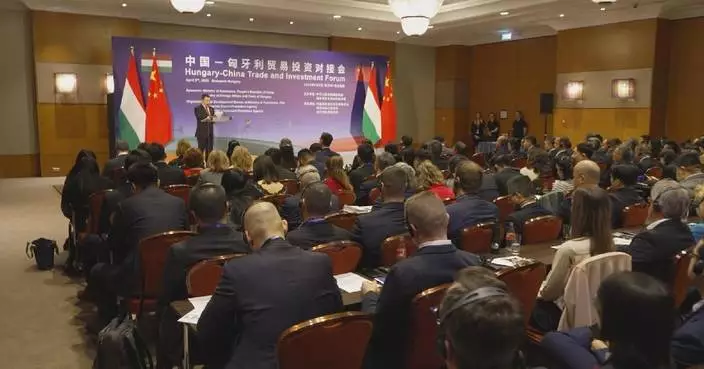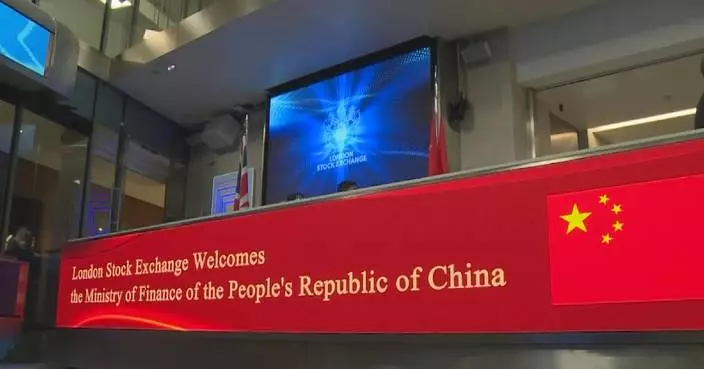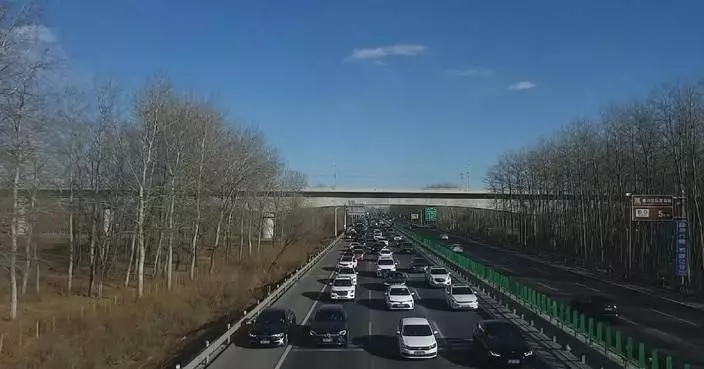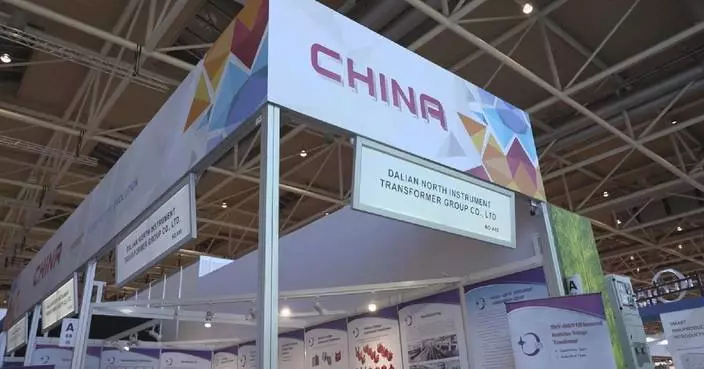China has unlocked many new application scenarios for its burgeoning low-altitude economy sector, which has entered the rapid growth stage with a scale expected to reach 2 trillion yuan (about 279 billion U.S. dollars) by 2030.
The low-altitude economy is an economic concept that relies on low-altitude airspace, in which unmanned aircraft like drones, helicopters and flying cars play a dominant role. It involves economic sectors such as low-altitude flight, air tourism, passenger transportation, general aviation services, scientific research and education, among others.
In the first half of this year, China recorded over 600,000 newly registered drones or unmanned aerial vehicles (UAVs) with the total number soaring 48 percent over the end of last year.
Now more than 14,000 drone companies hold a valid civil UAV operation certificate, and over 225,000 people possess the drone pilot license. Official data show that last year, the market size of China's low-altitude economy exceeded 500 billion yuan (about 69.85 billion U.S. dollars), with another 300 billion yuan (about 41.91 billion U.S. dollars) in new output value registered in the first six months of this year.
In less than a year after the Central Economic Work Conference held in December 2023 officially identified the low-altitude economy as a strategic emerging industry, the sector has further expanded in application scope and made many new technological breakthroughs.
Shenzhen City, an economic powerhouse in south China's Guangdong Province, has launched the country's first "low-altitude plus railway" intermodal transport service to facilitate people's traveling. Passengers can hail a helicopter through a few quick clicks on their cell phones when stepping out of a train station, which will take them less than one hour to almost any place they want to go in the sprawling Guangdong-Hong Kong-Macao Greater Bay Area.
The service improves the travel efficiency by more than six times that of a conventional transportation mode.
"I think it's a very cool thing. I'd try many more flying routes in the future where conditions permit," said a passenger surnamed Dong.
"More and more people now hail 'aerial taxis' through the mobile app we have developed. In the future, we will iterate the current diesel-powered helicopter into an electric aircraft to control the airfare at about a few hundred yuan," said Cai Wuqun, general manager of the strategy department at the Shenzhen-based HELI-EASTERN, a low-altitude general aviation carrier and helicopter service provider.
With the booming low-altitude economy, there have emerged many new business modes, such as intra-city air travel, inner-city commute, and aerial tour of scenic areas across a city. In the first half of this year, Shenzhen alone posted 12,000 manned helicopter flights for various purposes, an increase of 20 percent year on year.
Low-altitude aircraft are transforming sci-fi movie scenes into reality, bringing new revolution to people's daily life. Not long ago, four university admission notices were delivered by a drone to a residential community in Guangzhou, the provincial capital of Guangdong, setting a record in the country.
During the just-concluded Paris Olympics, China-made drones staged a splendid and dazzling aerial show over the iconic Eiffel Tower by forming various patterns in the night sky, immersing global tourists in the magic created by Chinese technologies. In April this year, a Chinese civil UAV transported goods to a location at 6,000 meters above sea level on Mt. Qomolangma, shortening the delivery time from eight hours to only 12 minutes.
"As a representative of new quality productive forces, low-altitude economy is no longer just a new way of transportation, but can widely empower the primary, secondary and tertiary industries. Its application scenarios become more diversified and the user experience is constantly bettered for people to enjoy a more pleasant flight," said Li Wenyu, director of the intellectual property and innovation development center at the China Academy of Information and Communications Technology.

Booming low-altitude economy expands further

Booming low-altitude economy expands further

Booming low-altitude economy expands further

Booming low-altitude economy expands further
The sweeping U.S. tariffs on imports are expected to increase household expenses, erode consumer spending power and worsen financial strain on American families, U.S. economic organizations and experts have warned.
The warning came following a series of moves adopted by the U.S. to impose tariffs on imports. It began with the executive order signed by U.S. President Donald Trump on April 2, which says that the U.S. will begin imposing a 10 percent "minimum baseline tariff" on all trade partners starting April 5. And then higher "reciprocal tariffs" will be levied on imports from certain partners, with these measures taking effect on April 9. Certain sectors, including vehicles, auto parts, steel and aluminum, are hit with even steeper 25-percent duties.
U.S. economists and business leaders have warned that the tariff increases will drive up prices, ultimately being passed on to consumers.
Concerned about soaring costs, some American consumers have already started stockpiling goods.
Trump aims to pressure other countries by imposing "reciprocal tariffs," which could come at a particularly high cost for U.S. consumers. With consumer confidence already on the decline, these tariffs are expected to further increase household expenses, erode consumer spending power, worsen financial strain, and add to the burden on American families, according to the economic organizations and experts.
The Yale University Budget Lab estimates that after the U.S. implements "reciprocal tariffs," if other countries retaliate, American households will face significant losses: an average of 1,300 U.S. dollars for low-income families, 2,100 U.S. dollars for middle-income families, and 5,400 U.S. dollars for high-income families.
According to analysis from the Yale University Budget Lab, the new tariff policies announced by the U.S. government could lead to a 2.3 percent increase in overall inflation this year, with food prices rising by 2.8 percent and car prices by 8.4 percent. This would result in an annual loss of 3,800 U.S. dollars for the average American household.
According to estimates from the U.S. think tank Tax Foundation, without considering retaliatory measures from other countries and regions, the U.S. "reciprocal tariff" policy will result in the following this year: Federal tax revenue will increase by 258.4 billion U.S. dollars, or 0.85 percent of the GDP, while after-tax income for U.S. individuals will decrease by an average of 1.9 percent. The average American household will face an additional 1,900 U.S. dollars in annual tax burdens.
For U.S. consumers, high tariffs could mean price hikes on everything from cars and home appliances to gasoline and groceries.
According to predictions from the Yale University Budget Lab, prices for products in categories such as leather goods, clothing, crops, metals and wool are expected to rise by more than 10 percent.
On Wednesday afternoon, renowned U.S. investor and billionaire Mark Cuban wrote on social media that it was time to start stockpiling goods.
"From toothpaste to soap, anything you can find storage space for, buy before they have to replenish inventory. Even if it's made in the USA, they will jack up the price and blame it on tariffs."
The U.S. policy of imposing a 25 percent tariff on imported cars officially took effect on April 3.
Many industry experts believe that the automobile industry, which heavily relies on global supply chains, cannot achieve the goal of "national exclusivity" through high tariffs.
Instead, it will make cars less affordable for more Americans, reduce the competitiveness of the U.S. auto industry, and increase the risk of a greater economic slowdown in the country.
Industry insiders believe that U.S. automakers will struggle to bear the cost pressures brought on by the 25 percent import tariff. According to estimates from JPMorgan, after the auto tariffs take effect, General Motors will be required to pay up to 13 billion U.S. dollars in import tariffs annually, while Ford will face around 4.5 billion U.S. dollars in import duties.
Some industry insiders said they believe that under the impact of tariffs, the U.S. auto industry may slide toward higher prices and lower quality.
A report from the Bank of America suggests that the auto tariffs could result in a decline of 3 million vehicle sales in the U.S., which is nearly one-fifth of last year's total sales.
Several U.S. financial institutions have analyzed the situation, warning that the tariff increases could potentially push the U.S. economy into a recession.
Mark Zandi, Chief Economist at Moody's Analytics, stated on social media on April 3 that if the U.S. fully and continuously implements its tariff policy, the country will suffer a severe recession -- even if it manages to avoid a full-blown depression.
On April 3, Citigroup released an investment strategy report stating that if the impact of U.S. tariffs cannot be eliminated through negotiations, the U.S. GDP growth for 2025 could be "wiped out."

Tariffs expected to raise household costs, weakening consumer spending, financial stability: reports






